AI Tools for Design: Your Powerful Design Partner
AI tools for design are software applications that utilize artificial intelligence to empower designers throughout the creative process. Think of them as intelligent assistants, not replacements for your creativity. Here’s a breakdown of their key functionalities and benefits:
Key Functionalities:
- Idea Generation: Struggling for inspiration? Describe your concept with text prompts, and some AI tools will generate visual ideas to spark your creativity.
- Image Creation: Need a specific image but lack the artistic skills? AI art generators can create unique illustrations or even photorealistic images based on your descriptions.
- Prototyping Assistance: Certain AI tools can design interfaces, mockups, and prototypes for websites and applications, accelerating the initial design phase.
- Workflow Automation: AI can automate repetitive tasks such as photo editing (background removal, color correction) or add creative elements to existing images, freeing up your time.
- Design Optimization: AI can analyze design elements like color palettes, fonts, and layouts, suggesting improvements based on design principles or user preferences.
Benefits of Using AI Tools for Design:
- Enhanced Creativity: Overcome creative roadblocks and explore a wider range of ideas than ever before.
- Increased Efficiency: Explore more design options and iterate faster, leading to quicker project completion.
- Improved Workflow: Automate tasks and expedite workflows, freeing up valuable time to focus on high-level creative decisions.
- Elevated Design Quality: AI can suggest design improvements based on established design principles or user data, resulting in higher quality work.
Examples of AI Design Tools:
- Canva’s Magic Design: This tool uses AI to generate social media posts, presentations, and even videos based on your text descriptions or uploaded media.
- Adobe Sensei (integrated with Photoshop and Illustrator): This AI suite offers features like creating unique image edits or generating new elements based on existing ones.
- Midjourney and DreamStudio: These are powerful AI image generation tools that allow for creating artistic illustrations or realistic images from textual descriptions.
By incorporating AI tools into your design workflow, you can become a more productive and effective designer, producing exceptional creative work that stands out from the crowd.
The Best AI Tools for Design in 2024
Here are our picks for the best AI tools for design in 2024.
1. Adobe Firefly
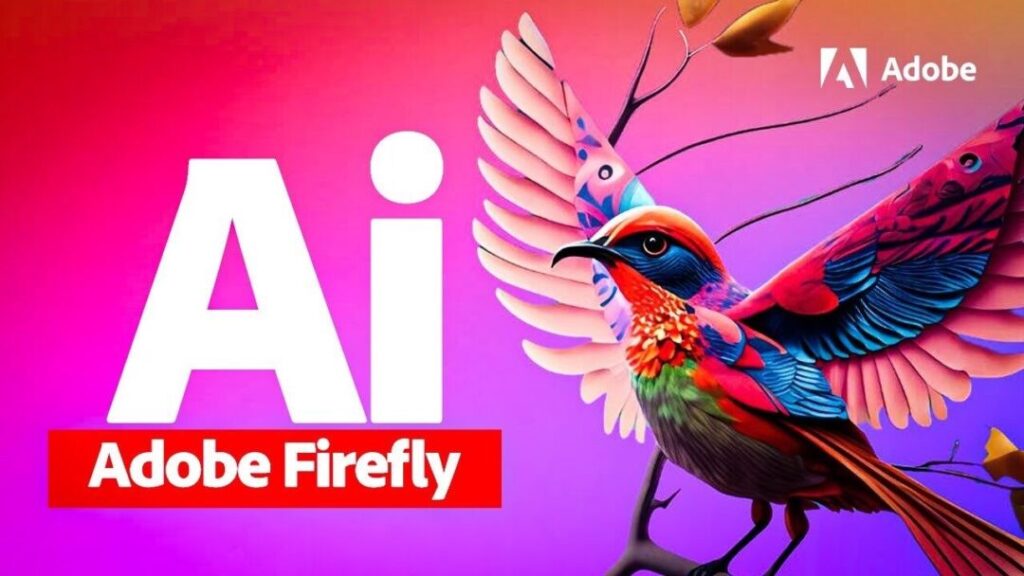
Adobe Firefly is a new and exciting addition to the realm of creative generative AI models that is expected to revolutionize the process of ideation, creation, and communication in Adobe’s range of products. Initially focusing on image and text effect generation, Adobe Firefly offers an array of impressive attributes:
- Generative AI Model: Adobe Firefly works by employing advanced generative AI algorithms. These models create content from scratch based on a series of instructions or conditions given by the user, providing a base for unique creative output.
- Image and Text Effect Generation: The key area of application for Firefly is within image and text effect generation. It can generate high-quality digital images based on textual prompts given by the user.
- Streamlines Workflows: One of the biggest advantages of Adobe Firefly is the significant improvement it brings to creative workflows. It can help quickly materialize ideas, construct mood boards, or even generate extraordinary scenes for various creative projects.
- Detailed Image Generation: Firefly’s generative capabilities are not just limited to basic designs. In fact, it can produce images with astonishing detail, essentially acting as a powerful digital artist that can accurately realize complex scenes and concepts.
- Beta Phase: Currently, Adobe Firefly is in its public beta test phase and accessible through Photoshop beta app.
- Various Creativity Scenarios: Firefly qualifies for numerous creativity scenarios. For instance, tasks like removing objects from images or generating design variations that might’ve previously been time-consuming, can now be accomplished instantaneously with Firefly.
- Generative Art: Firefly enables artists to create stylistic and complex art pieces by translating simple verbal descriptions into complete, visually stunning designs.
- 3D Compositions: With Firefly, even 3D composition can be converted into photo-realistic images, accelerating the creation of new styles with comprehensive tools.
Overall, Adobe Firefly takes creative exploration and ideation to new heights with its AI-powered generative capabilities. Its ability to maximize creative potential by providing rich detail and accurate image generation could make it a game-changer in the creative industry.
2. MidJourney
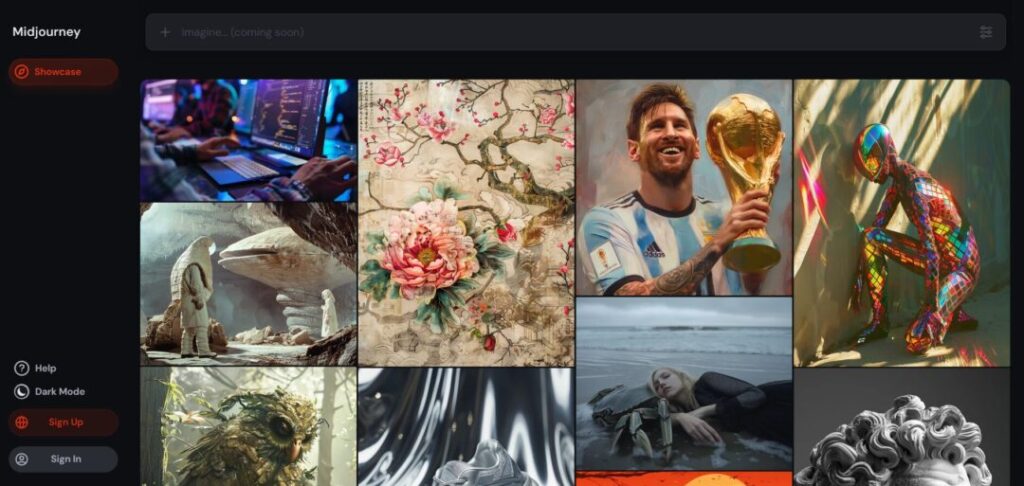
MidJourney is a generative artificial intelligence program that was created and is maintained by Midjourney Inc., an independent research lab based in San Francisco. The program has been designed to generate images from natural language descriptions or prompts, which is a functionality similar to OpenAI’s DALL-E and Stability AI’s Stable Diffusion.
Here are some details about MidJourney:
Generative AI Service: At its core, MidJourney is a generative AI tool that creates images based on text prompts. This novel approach allows for a unique method to express creativity through a combination of language and art.
User Interface: MidJourney can be accessed and used through the web or on Discord. It allows users to create customized images by providing simple text prompts.
Creative Aid: MidJourney is an excellent resource for artists and creators. It offers new perspectives and ideas, helping artists to overcome creative blocks and enhance the quality and efficiency of their work. This AI tool can produce custom images that elevate the uniqueness of an artist’s work.
Easy to Use: One of the perks of using MidJourney is its user-friendly interface. It is easy to learn and use, even for absolute beginners. It does not require any coding experience or complex setup. Users simply provide their text prompt and let the AI work its magic.
Research Lab: Besides being a generative AI tool, MidJourney is part of a research lab which explores new mediums of thought and is dedicated to expanding the imaginative powers of the human species.
Popularity: Since its inception, MidJourney has gained recognition as one of the most popular tools for creating AI art. It’s used by a variety of individuals and organizations involved in creative industries, owing to the innovative possibilities it offers.
In summary, MidJourney offers a revolutionary way of creating digital art, transforming simple text prompts into detailed and creative images. Its ease of use and innovative approach to image generation make it a valuable asset in the toolkits of creatives worldwide.
3. Topaz Labs
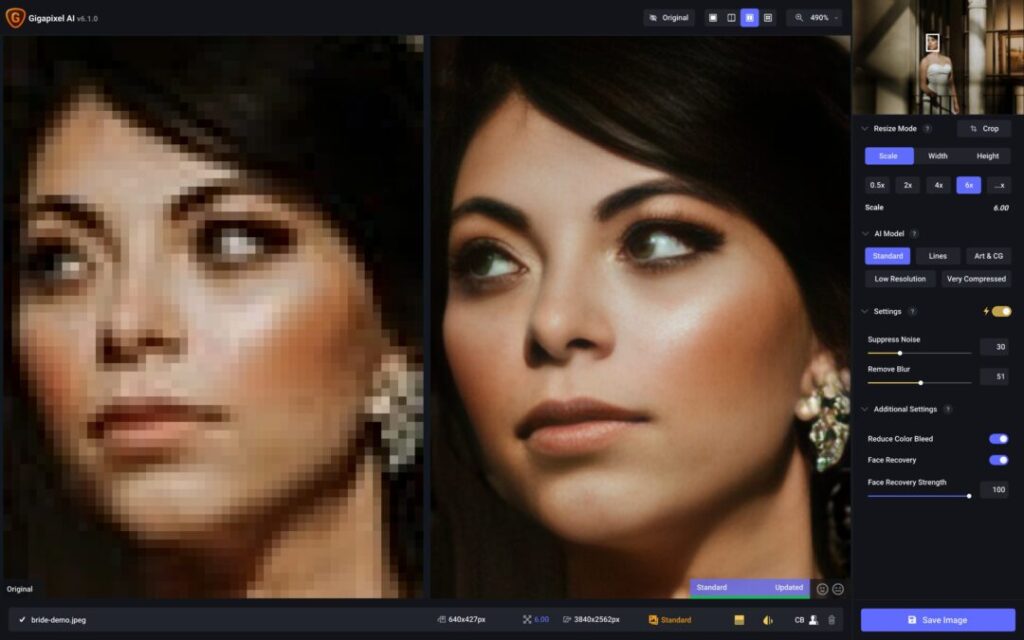
Topaz Labs is a recognized name in the field of photo and video editing software. Their applications leverage the power of deep learning to provide consumers with top-grade quality outputs. Here is a detailed outline of Topaz Labs:
- Artificial Intelligence-Based Software: Topaz Labs provides a suite of software tools that utilize artificial intelligence to enhance digital photo and video quality. This use of AI helps to streamline the editing process, reduce the time required for post-production tasks, and provide highly accurate image enhancements.
- Range of Tools/AIs: Topaz Labs’ suite includes a number of products designed to cater for specific needs. This includes tools for noise reduction, sharpening, upscaling, and even complex image corrections. Some of their popular products include Topaz Detail (which fine-tunes images by focusing on details), Topaz Studio 2 (an image editor with an emphasis on effects), and Topaz Photo AI (autopilot for maximizing image quality).
- Image Enhancement: A standout feature of Topaz Labs is their commitment to image enhancement. They provide tools designed to maximize the quality of images, making it easier than ever for photographers to present their best work.
- User Interface: Topaz Labs products are generally lauded for user-friendly interfaces, simplifying what would otherwise be complex editing tasks. This makes it accessible for both professionals and novices alike.
- Topaz AI Clear: One of their impressive tools is AI Clear, designed to minimize image noise and restore sharp detail in photos. It offers adjustments that are built to increase the clarity and crispness of an image, while removing noise and increasing sharpness, and it can be used as a plugin for Photoshop among others.
- Deep Learning: Topaz Labs’ use of deep learning in its tools helps the software to get better over time. The AI learns from the input and the corrections it makes, leading to improvements in processing speed and accuracy as more data is fed into the system.
- Proprietary Technology: Topaz Labs uses proprietary technology to provide enhanced image quality that cannot be found anywhere else. This presents photographers with the opportunity to create unique, unparalleled edits.
In essence, Topaz Labs is a leader in providing AI-powered photo and video editing software. Their commitment to innovation and quality makes their suite of products the go-to resource for many professionals in the industry.
4. Adobe Sensei
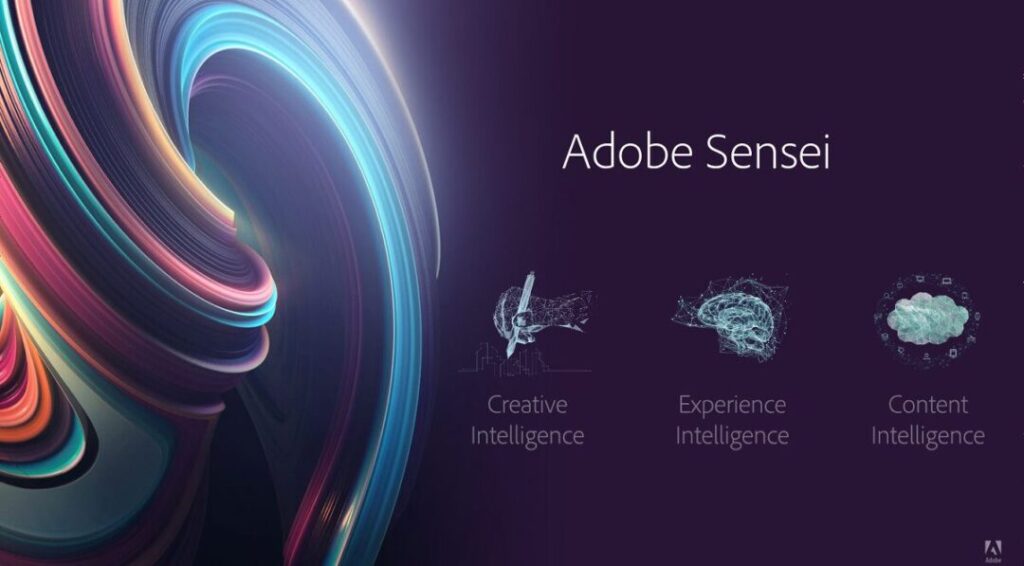
Adobe Sensei is a powerful artificial intelligence (AI) and machine learning (ML) platform developed by Adobe. It harnesses the company’s decades of experience in data science and creativity to deliver powerful automated tools to users.
Adobe Sensei is fundamentally integrated into Adobe’s Creative Cloud Suite, Experience Cloud, and Document Cloud, and it’s designed to enhance productivity, augment creativity, and deepen user engagement. It incorporates advanced AI and ML technologies to enable intelligent features across Adobe’s applications that drastically improve the quality and efficiency of digital creations.
Key Features of Adobe Sensei:
- Automated Workflow: Adobe Sensei automates laborious, repetitive tasks in your creative process and workflow. For example, it suggests automatic cropping and subject selection in Adobe Photoshop.
- Content Understanding: Adobe Sensei can understand the context and meaning of content. This is prominently used in features like auto-tagging and smart searches in Adobe Stock and Lightroom.
- Adaptive User Interface: Adobe Sensei can also offer an adaptive user interface. In Adobe Premiere Pro, for instance, it provides automatic video reframing that helps optimize your video content for different screen sizes.
- Creative Guidance: In Adobe Illustrator, Adobe Sensei’s creative guidance can quickly point out the color themes and offer recommendations, drastically saving your time.
- AI-Driven Analytics: In Adobe Analytics, Adobe Sensei can help businesses understand their customer data better. Its AI-powered features can detect anomalies, predict churn, and offer actionable insights on customer behavior.
- Predictive Personalization: When employed in Adobe Target, Sensei can predict the appropriate personalized experiences for customers. It employs machine learning algorithms to analyze past user behavior and interactions to deliver optimally tailored content.
- Automated Document Processes: With Adobe Sensei in Acrobat DC, users can instantly and accurately turn scanned documents into editable, searchable PDFs. It also helps in form recognition and automatic form filling.
In conclusion, Adobe Sensei is AI for creatives, empowering a broad array of intelligent features that enhance creative production, boost productivity, and deliver a closer, more personalized relationship with digital content. Its diverse range of features, be it for designers, artists, marketers, or businesses, make it a powerful tool in Adobe’s arsenal.
5. Canva
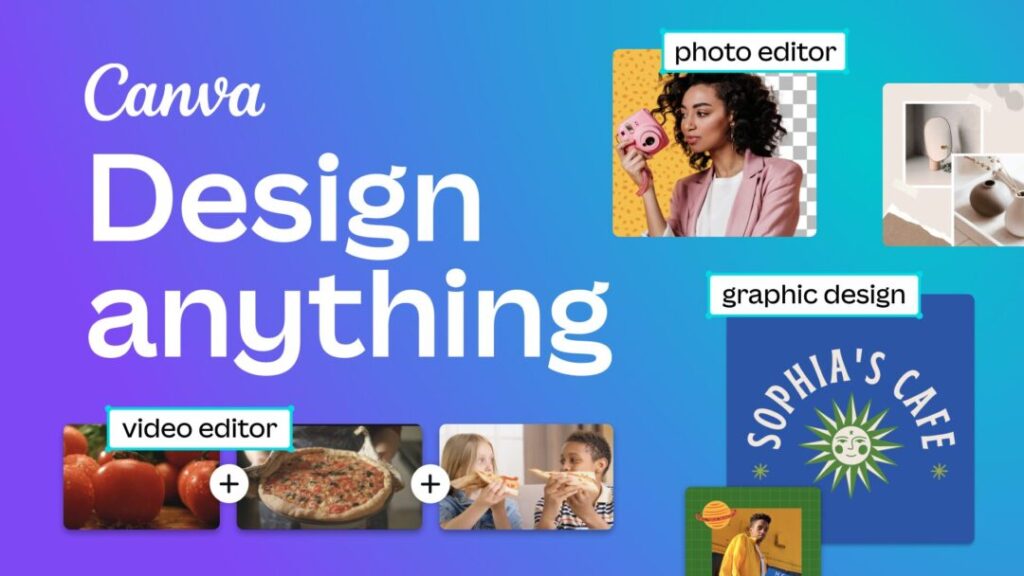
Canva is a graphic design platform used to create social media graphics, presentations, posters, documents and other visual content. The app already includes templates for users to use, and it is also highly user-friendly. It’s available on web and mobile, and integrates millions of images, fonts, templates and illustrations.
Here are key features of Canva:
- Canva Design Editor: Canva’s extensive design editor allows you to create designs from scratch or edit existing templates with a simple and intuitive interface. You can add text, change fonts, colors, and upload your own images.
- Pre-made Design Templates: Canva offers hundreds of thousands of pre-made templates for a wide variety of content – infographics, presentations, social media posts, brochures, newsletters, resumes, and many more.
- Photo Library: Canva offers access to a massive library of high-quality photos, graphics, and illustrations, many of which are free. It also offers premium images at a minimal cost.
- Drag and Drop Interface: It employs a simple drag-and-drop interface, enabling even those without design skills to create professional-grade marketing materials, social media posts, and more.
- Collaboration: Canva has a feature called “Canva Teams,” which allows teams to collaborate on designs in real-time. You can share designs with your team, add comments, and make real-time changes.
- Customizable Branding: Canva allows businesses to create and set brand-specific templates with customizable elements and layouts, ensuring a consistent image across designs.
- Downloads and Publishing: Once your designs are complete, Canva provides the option to download the project file in various formats. It also has integrations with popular platforms, allowing users to post directly to social media or printing services.
- Canva Print: Canva also offers a print service. Once you finish your design, you can order prints directly from Canva and have them delivered to your doorstep.
- Canva Apps: Canva offers dedicated apps for both iOS and Android devices.
At its core, Canva is about empowering businesses, teams, and individuals to create stunning visuals quickly and with ease. Its powerful features and simple interface has made it a favorite tool among businesses and teams of all sizes.
6. DreamStudio
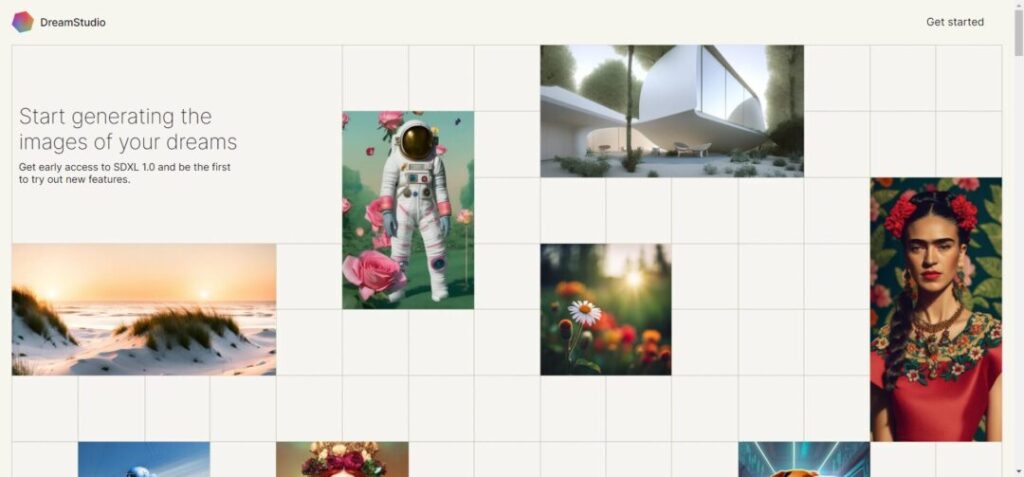
DreamStudio is an AI-powered platform that allows anyone to generate, edit, and modify images through textual prompts. By leveraging the power of Stable Diffusion models, it enables the transformation of text descriptions into creative and stylized visuals.
Here are key features of DreamStudio:
- Effortless Image Generation: DreamStudio provides an interface for creating images using the latest version of the Stable Diffusion image generation model. This technology allows you to generate images in any style, expanding your imagination and helping you achieve your creative goals.
- CLIP Guidance and Image-to-Image Feature: DreamStudio has released new features like CLIP Guidance, which allows the AI to get a sense of direction on where the design should head through prompts. The Image-to-Image feature must let you transform your input images into new creations.
- Image Masking and Stable Inpainting: DreamStudio offers image masking, allowing users to command the AI to generate specific components of an image, fill in the missing pieces, or make modifications to existing sections. Meanwhile, Stable Inpainting provides users with the ability to fix or change elements of an image without disturbing its overall composition.
- Prompt Engineering: DreamStudio offers the ability to guide your AI image generation using detailed prompts. This means that you can control the elements present in your images more accurately. It may include certain colors, objects, or properties of the image.
- Versatility: DreamStudio allows the creation of images in a wide array of styles, from conventional to avant-garde interpretations, giving you a wide berth to explore your creativity.
- User-friendly Interface: DreamStudio is praised for its easy-to-use interface which encourages even those without technical prowess to engage in AI-based design.
Whether you are a professional designer or a hobbyist, DreamStudio provides a powerful suite of tools for exploring ingrained creativity within the boundaries set by artificial intelligence.
7. AutoDraw
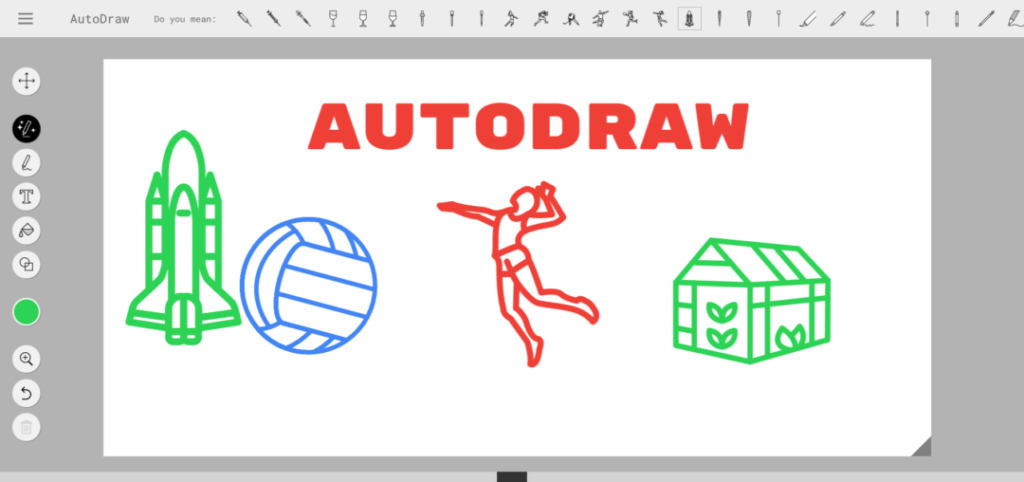
AutoDraw is a web-based tool developed by Google that uses machine learning and artificial intelligence to guess and improve doodles in real time. It was launched as a part of Google’s AI Experiments initiative. This playful platform is built for everyone and encourages even those who think they aren’t skilled at drawing to express themselves creatively.
Key Features of AutoDraw:
- AI-Powered Doodle Recognition: AutoDraw uses AI to recognize your doodles and suggests professionally-drawn alternatives. As you begin sketching your line drawings, this tool offers a list of guessworks that closely match your amateur sketch.
- Predesigned Clipart: There are hundreds of pre-existing images and designs readily available in AutoDraw’s library. You can select any image to integrate into your design easily.
- Easy-to-use Drawing Board: Along with the AutoDraw (AI) mode which suggests clipart based on your doodles, it also provides a ‘Draw’ mode, where you can sketch freely. This flexible drawing board comes with an array of customizable options like colors, brush sizes, erasers, and fill colors.
- Text Tool: AutoDraw offers a Text tool that lets you add custom text to your design. Users can customize the font size and color to their liking.
- Shareability: You can easily download your completed artwork in .png format. Additionally, AutoDraw allows you to share your designs with others easily via a unique URL.
- Mobile-Friendly: The application is designed to be used on any device, from laptops to tablets to smartphones. This accessibility makes it great for quick brainstorming sessions, no matter where you are.
- Completely Free: One of the key features of AutoDraw is that it’s a free tool. It does not have a premium version or in-app purchases, enabling open access to all its features.
In a nutshell, AutoDraw is an innovative drawing tool that pairs machine learning technology with drawings created by talented artists to help make doodling more enjoyable and accessible to everyone. It’s a fun tool for both kids and adults alike that helps turn scribbles into meaningful art graphics.
8. Khroma
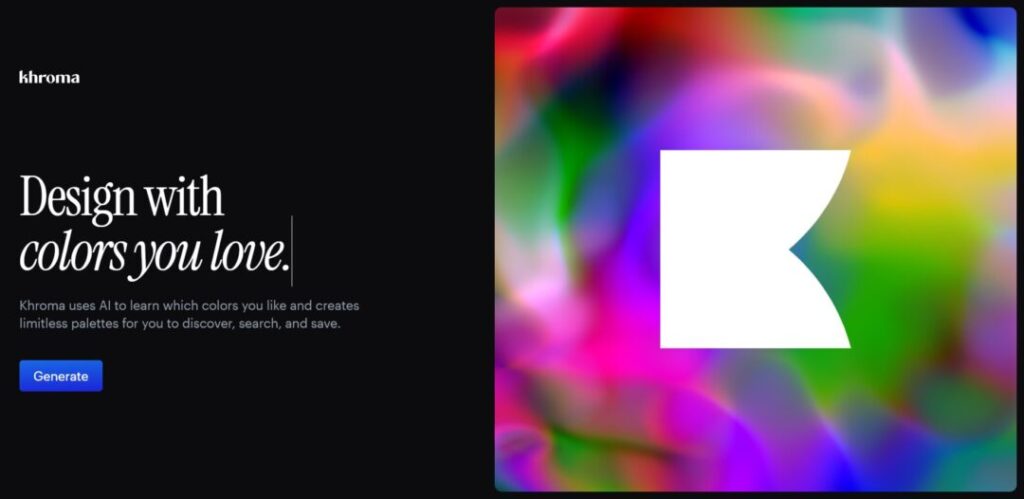
Khroma is an AI-powered web application that is specifically designed to learn your color preferences and generate personalized color palettes. It uses neural networks and machine learning to understand which colors you like and dislike, creating endless color combinations tailored especially for your taste.
Key Features of Khroma:
- AI-Powered Personalization: Khroma uses AI to analyze your favorite colors and understands your style, offering you personalized color combinations.
- Generative Color Palettes: Based on your indicated preferences, Khroma can generate limitless palettes for you to discover and browse through.
- Color Discovery and Search: Once Khroma understands the colors you favor, it allows for an easy discovery and search function, helping you to find the color palettes that align with your taste quickly.
- Color Saving: Khroma offers the ability to save your favorite color palettes. This means you can easily refer back to them when needed, enhancing your design efficiency.
- Color Combinations Presentation: Khroma presents color combinations in different formats that you would typically encounter in design projects, such as Type, Poster, Gradient, and Image.
- User-Friendly Interface: Khroma is praised for its intuitive and interactive interface, making it an excellent tool for both professional designers and hobbyists.
In short, Khroma revolutionizes the way designers and creatives select and develop color palettes, making it an essential tool in the design world. It removes the uncertainties and myriad choices in color selection and replaces them with backed, personalized recommendations.
9. Playground
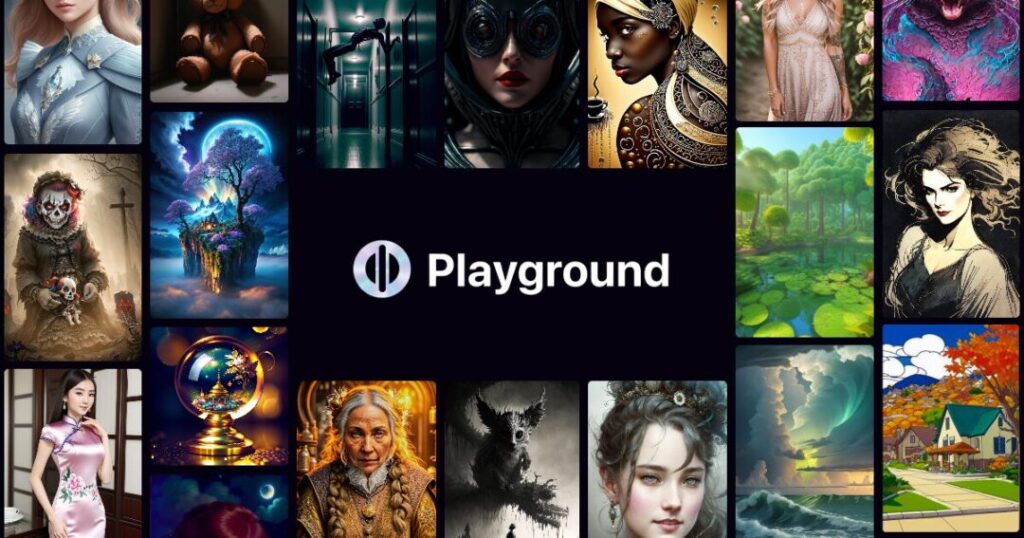
Playground AI is an advanced platform that leverages artificial intelligence tools to enable users to create, edit, and manipulate images based on text prompts. This tool uses technologies like DALL-E and Stable Diffusion to streamline the process of image making and editing.
Key Features of Playground AI:
- Custom Image Generation: Playground AI stands out with its ability to craft images according to a user’s imagination. Based on provided text prompts, it generates images that align closely with the descriptions.
- Mixed Image Editing: The platform offers novel approaches to merge real and synthetic images. Changing backgrounds, inserting elements, or removing unnecessary details is made easier through its text-to-image generation capabilities.
- Real-time Collaboration and Sharing: Playground AI provides a collaborative environment for real-time brainstorming and project development. It offers a platform for users to share their AI art and collaborate with others.
- Comprehensive Suite of AI Tools: Playground AI provides a variety of AI-powered tools for image creation, including DALL-E and Stable Diffusion. These advanced functionalities help to outline images or even create multi-component scenes based on user prompts.
- Intuitive and Accessible Interface: The user-friendly design of the platform makes it suitable for both beginners and experienced users. The accessibility of its functions significantly improves the convenience of crafting images.
- Customization and Flexibility: Users can deeply customize the images they are creating or editing with full flexibility, so the result can be tailored towards their specific needs or preferences.
- Experiment-Friendly Environment: The tool provides an environment where users can experiment with AI models and datasets. No coding skills are required to manipulate or experiment with the elements provided.
Playground AI, in essence, is transforming how we create and manipulate images. By utilizing AI to generate images from text prompts, the platform allows for excellent ease and flexibility, imagining more dynamic, immersive visuals with less effort. It’s a substantial tool for designers, artists, developers, and anyone interested in AI artistry.
10. Uizard
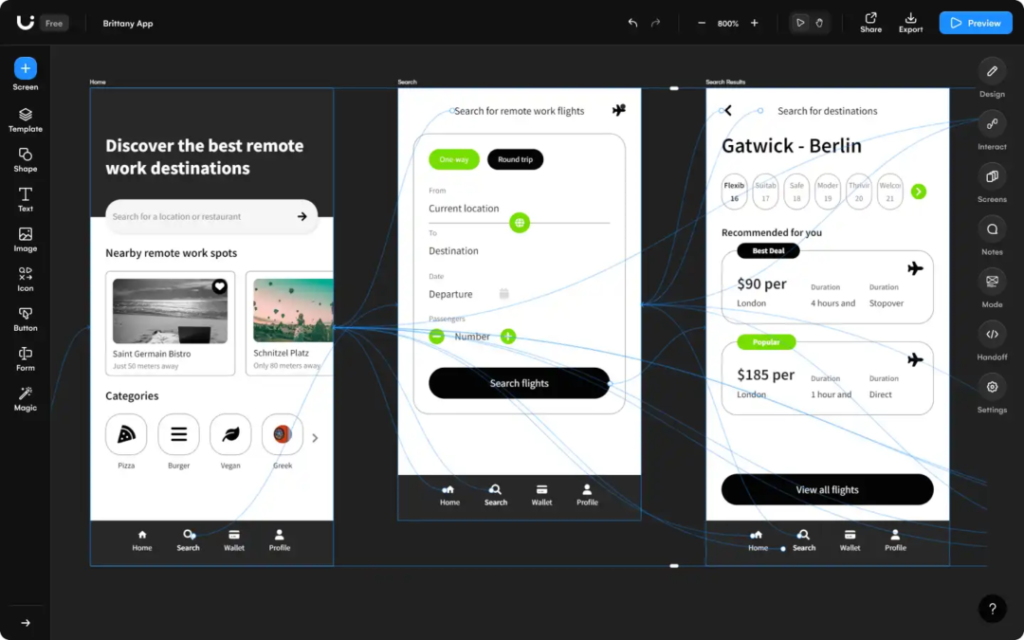
Uizard is an innovative, AI-powered UI design tool that empowers users to rapidly design wireframes, mockups, and prototypes. It is built with powerful features that allow users to generate design themes directly from their input, such as images or even simple text. This platform is dedicated to democratizing design to enable everyone, including non-designers, to build interactive digital products.
Key Features of Uizard:
- Generate from Text: Uizard can generate editable mockups and screens directly from simple text input, enabling a quick translation of ideas into actual design prototypes.
- Screenshot Scanner: With this feature, screenshots can be turned into editable mockups, allowing users to modify and refine existing designs or apps effortlessly.
- Wireframe Scanner: Uizard is capable of digitizing hand-drawn wireframes. By simply scanning your sketches, you can quickly transform your paper ideas into digital designs.
- AI-Powered Design Themes: Using deep-learning algorithms, Uizard can create beautiful design themes from uploaded images, such as photos or screenshots, thus ensuring designs maintain consistency with your brand vision.
- Rapid Prototyping: Uizard’s AI features enable users to develop prototypes swiftly. These can be iteratively refined, promoting faster design workflow and encouraging experimentation.
- Collaboration Tools: Uizard also supports collaboration among product teams, allowing for simultaneous sharing and editing of design concepts, fostering teamwork.
- Customizable Templates: Uizard offers highly customizable design templates to suit various project needs, ensuring flexibility and adaptability in the design process.
- Commenting/Notes Feature: The platform enables suggesting design changes or annotations directly on the design, ensuring clear communication and better understanding among team members.
- Component Library: Uizard features a comprehensive component library, providing users with a wide range of design elements to choose from, enhancing the design’s diversity and uniqueness.
- Customizable Branding: Users can align design elements with brand guidelines, ensuring brand consistency while creating designs.
The mission of Uizard is to revolutionize design, bringing their vision to life faster than ever before. As design becomes AI-infused, more people—regardless of their skill level—can participate in the design process, making it more inclusive and creative.
Conclusion
In conclusion, the landscape of design tools is undergoing a remarkable transformation, thanks to the advent of Artificial Intelligence. The tools discussed in this article, and many others, are not only redefining boundaries but also democratizing the world of design, making it accessible to those without formal training or intricate knowledge of the field.
While Uizard, Playground AI, and others lead the frontier with unprecedented features like AI-generated mockups from text, converting screenshots into editable designs, and creating stunning images based on user prompts, the true worth of these tools lies in their potential to amplify human creativity and efficiency. They serve not just as mediums to convert ideas into aesthetically pleasing visuals but act as partners that learn, adapt, and enhance our creative capabilities.
As we step forward into 2024, the fusion of AI technologies with design tools seems only to be beginning. The pace of innovation is thrilling, and the future promises more exciting opportunities. Accessibility, collaboration, customization, and an overall emphasis on user experience – these aren’t just trends but are staples that are setting the stage for the design of the future.
While each AI design tool comes with its unique features and strengths, the ultimate choice of the tool would rest on specific requirements, the task at hand, and the designer’s comfort with the platform. However, one thing remains certain – with the continuous evolution of AI, the design tools of today are becoming the essential companions of the designers of tomorrow.
As we usher in this new era of AI-infused design, let’s celebrate the possibilities, embrace the changes, and look forward to a future where technology and creativity coexist in seamless synergy, pushing the boundaries of what we can create. It is an exciting time to be in design—let’s make the most of it.



